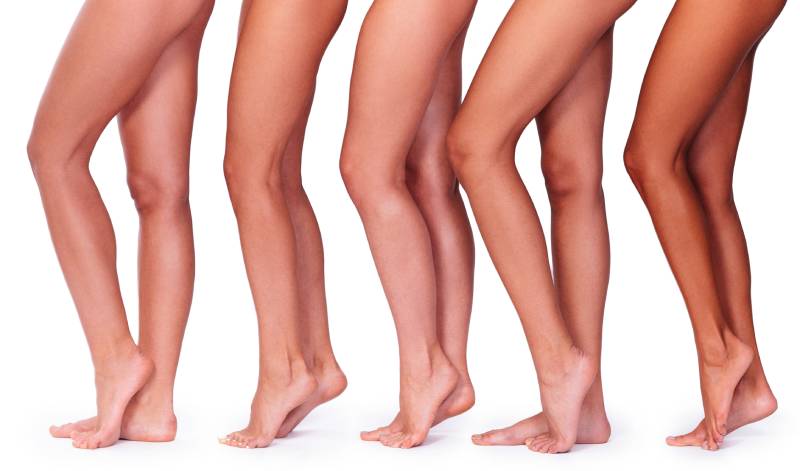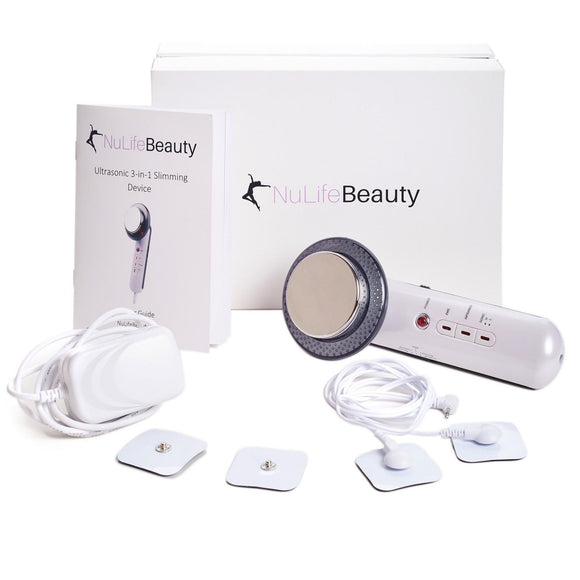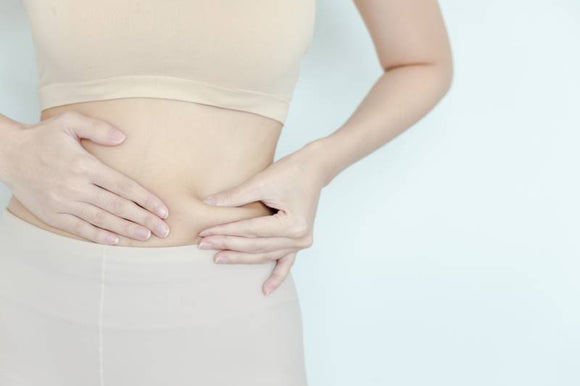
How to Get Rid of Cellulite on the Thighs with the At-Home Ultrasonic Cavitation Machine?
NumeroUno Web
Scientific studies have proven that using an ultrasonic cavitation machine is one way to get rid of cellulite on the thighs and other parts of the body. An at-home ultrasonic cavitation system allows for convenience and privacy when targeting small areas of fat deposits on the body while sculpting and contouring the body.
How Is Cellulite Different from Other Fat?
Our bodies have two types of fat, visceral and subcutaneous. Visceral fat encircles the organs and is responsible for an expanding waistline as it can gather under the stomach muscles. Subcutaneous fat lies just under the skin surface as it aids in body temperature regulation. It encompasses the muscles and bones. Our fat cells are based on genetics and lifestyle.
Cellulite forms as the subcutaneous fat intertwines with the connective tissues. It is commonly seen as dimples on the buttocks, hips, upper arms, and thighs. Men and women are candidates for cellulite, especially as we age with the thinning of the skin surface.
What Are the Types of Cellulite?
There are three types of cellulite which all react differently to varying treatments.
Soft cellulite:
Often referred to as flaccid cellulite, soft cellulite is seen in localized areas such as the legs, buttocks, arms, and stomach. Soft cellulite is more noticeable when in the horizontal position as it correlates to sagging skin. Weight gain is often the source of soft cellulite.
Hard cellulite:
Also known as compact cellulite, hard cellulite is similar in appearance to orange peel dimples. People of all shapes, sizes, and athletic status can have hard cellulite on the hips, thighs, and glutes. In severe cases, the lumpy areas can cause pain and feel stiff to the touch.
Edematous cellulite:
This is rare and is medically known as poor circulation cellulite. Poor blood circulation brought on by fluid retention can cause cellulite on the thighs, knees, and lower legs. Pain may be experienced to the touch or after sitting for long periods of time.
What Are the Grades of Cellulite?
Cellulite can be found on localized fatty areas of the body. The lumpy markings and dimples are often similar looking to an orange peel. For some people, cellulite is only visible when the area is pinched. For others, there are no visible markings, although it can exist in the tissue layers.
There are four grades of cellulite.
- Grade 0 cellulite is not noticeable on the skin surface but may be present within the dermis tissue underneath the skin. The skin surface appears smooth when forced to pucker.
- Grade 1 cellulite also does not present dimples on the skin surface, but the area may look pale. This indicates reduced elasticity, which causes the cellulite to appear when the skin is pinched.
- Grade 2 cellulite is seen as small lumps and bumps on the skin surface, especially in the standing position. With this grade, the appearance of the dimples disappears when in the horizontal position.
- Grade 3 cellulite is referred to as the most severe stage of cellulite. Regardless of the position, this grade of cellulite is seen at all times. The affected areas may be painful and hard to the touch.
What Causes Cellulite on the Thighs?
As cellulite can affect men and women of all shapes and sizes, there are very few people that will not experience the unsightly marks at one point in their lives. It is more prevalent on overweight people, but many slender people also have cellulite.
Cellulite forms as fat deposits push through the connective tissue but these deposits are not the only cause of the dimples. Factors leading to cellulite can include, but not be limited to, hormones, genetics, age, and skin structure. None of these can be altered to prevent cellulite.
Does Cellulite Develop with Age?
Age plays a major role in the development of cellulite. Unfortunately, the natural aging process causes many changes to our physique that in most cases, cannot be stopped or reversed. Cellulite is one of those changes.
For women, it can begin as estrogen production levels drop as they age. Estrogen supports blood circulation and function. With lower estrogen, collagen production is reduced forcing the connective tissue to thin. Fat deposits therefore protrude through the tissue easily and causes dimples on the skin surface.
Can You Get Rid of Cellulite on the Thighs?
The million-dollar question on everyone’s lips is how to get rid of cellulite. While there is little prevention to keep cellulite at bay, a cellulite machine for home use can help reduce the appearance.
There are several treatments that have been developed over the years to reduce cellulite. One of the first surgical procedures is the renowned liposuction treatment. This is performed to remove fat deposits, but cellulite remains in most areas. Laser technology has been recently added to the procedure to target cellulite. Studies are still inconclusive on the effect.
This same type of laser technology is also combined with radiofrequency to reduce the appearance of cellulite. Several sessions of treatments are done with promising results, none of which are permanent.
A non-surgical treatment is cryolipolysis which is done to destroy the deposits in fat cells by freezing the lipids. For those who have success in this type of procedure, it can take up to four months for visible results with many treatments.
Lifestyle changes may help reduce the appearance of cellulite on the thighs and upper arms. A diet of fiber, whole grains, fruit, and vegetables promotes smooth healthy skin cells. Carrying less weight and toning muscles have also been known to help reduce the unsightly marks.
Does Losing Weight Helps to Get Rid of Cellulite on the Thighs?
With lifestyle changes, following a healthy diet will stimulate good blood circulation, tone the body, and help with excess weight. While these are factors to good skin health, it does not prevent cellulite from forming.
Nevertheless, losing weight may reduce the appearance of cellulite in problem areas such as the stomach, thighs, and buttocks. To lessen the amount of cellulite, losing weight should be done properly with a good diet and regular exercise as opposed to fad diets.
Does Topical Medication Treat Cellulite on the Thighs?
Millions of dollars are spent every year in advertising topical medication products that promise immediate results in eliminating cellulite. Dozens of studies have been used to uncover if retinol, herbs, caffeine, or antioxidants are the magical ingredients to banish cellulite forever.
Unfortunately, there has been no scientifically proven results that any topical creams or lotions can get rid of cellulite. Other remedies such as skin wraps, massages, and dry brushing have also been unsuccessfully proven to work.
So how are the claims even plausible? The ingredients used in these topical medications do have properties to help boost blood circulation, plump skin cells, and moisturize the skin to give the appearance of smooth, silky skin. These treatments can be used to maintain healthy skin and, in turn, may help in reducing the appearance of minor cellulite development.
Does Ultrasonic Cavitation Effectively Treat Cellulite on the Thighs?
One of the popular therapies in how to treat cellulite is ultrasonic cavitation. The same technology used in ultrasound machines in medical offices for testing is the main component of the best cellulite treatment machines.
Ultrasonic cavitation targets fat cells underneath the skin surface. The low-frequency ultrasonic waves gently penetrate the skin targeting the fat deposits. The vibration and heat from the ultrasonic waves cause the fat cells to break down, sending the fat deposits (triglycerides) to disperse.
Some of the fat deposits enter the lymphatic system to be removed while others turn into glycerol and free fatty acids. These former fat deposits as used as energy or excreted as waste.
The far infrared function of an ultrasonic cavitation machine supports the ultrasonic waves to treat cellulite. This type of treatment stimulates blood circulation, boosts the production of collagen, and revives old skin cells. It is the combination of these workings that firms and strengthens the skin surface.
Who Should Avoid Getting the Ultrasonic Cavitation Treatment?
While an ultrasonic cavitation procedure is a safe and effective form of treatment for cellulite, there are situations and health conditions that are recommended to avoid use.
With any cellulite removal machine, those undergoing treatment with blood clotting medications, or a history of malignancies should not have ultrasonic cavitation.
People who have been diagnosed with osteoporosis or diabetes, and women who are pregnant or breastfeeding are also recommended not to have this treatment.
What People Have to Say about NuLifeBeauty’s Ultrasonic Cavitation Device?
NuLifeBeauty’s Ultrasonic Fat & Cellulite Burner is a 3-in-1 alternative solution to expensive salon and clinical treatments. Our scientifically proven handheld device is a safe and effective way to treat cellulite at home. The three-key benefits of ultrasonic cavitation, electronic muscle stimulation, and far infrared functions work together to target fat deposits and cellulite.
For more information about our products for home use, visit nulifebeauty.com or contact us today at help@nulifebeauty.com.


